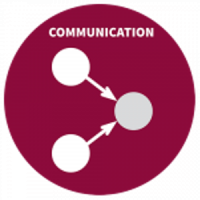Complex, Meidoornkade 22
3992 AE Houten
0343 528 040
3992 AE Houten
0343 528 040

Interpersonal communication is the most important success factor for any group of people. When the quality is high it creates a common and practical frame of reference for the task at hand. When the quality is poor the chance of rework and frustration increases.
The success strategy: Be fit and tune in. We connect to each other and include mutual thoughts and feelings into new information and meaning. We can discuss this factor using the following success markers: Openness, Empathy, Mutual understanding, Practical translation and Shared meaning

Most teams experience an open team culture. Team member feel that everybody is willing to openly share information. This does not imply that there is no room improvement. Especially in multidisciplinary teams and ‘expert environments’ a high level of openness is required to obtain a shared meaning and create a collective intelligence.
The first step in creating an open mind set in a group setting is to feel secure and balanced.
Then adjust your awareness by asking yourself:
You can’t share what you don’t know.
Regularly adress the importance of group openness.
Slow down when discussing topics that relate to important values of team members. Check ecology by asking:
Make sure that the interpersonal communication is specific enough to understand each other


Openness and curiosity stimulates mutual understanding.
Apply ‘active listening’
Do not jump to conclusions and test your personal ‘logic’ by using the ladder of inference (Peter Senge)

A relatively small number of team members feels able to effectively use important information for adjustment of individual choices and actions. This probably explains why other success markers such as proactive alignment, group focus and taking initiative have low scores. Often information from meetings is too general for effective use in the specific individual context of work.
Ask questions that stimulate content coherence:

Our own worldview sometimes blocks new information and limits the chance of establishing a shared meaning. Try to experiment with the following assumptions:
Rien van Leeuwen gaat in op basiscondities voor duurzame verandering.
Aan de hand van praktijk-cases verkennen we de barrières bij het bereiken van duurzame doelen op strategisch, tactisch en operationeel niveau. Denk hierbij aan bestaande structuren en opvattingen, maar ook aan het niet kunnen duiden van negatieve en positieve impact.
We delen onderling de best practices en interventies die anderen activeren. Uiteindelijk draait elke verandering om een andere manier van interactie.
Rien van Leeuwen gaat in op basiscondities voor duurzame verandering.
Aan de hand van praktijk-cases verkennen we de barrières bij het bereiken van duurzame doelen op strategisch, tactisch en operationeel niveau. Denk hierbij aan bestaande structuren en opvattingen, maar ook aan het niet kunnen duiden van negatieve en positieve impact.
We delen onderling de best practices en interventies die anderen activeren. Uiteindelijk draait elke verandering om een andere manier van interactie.